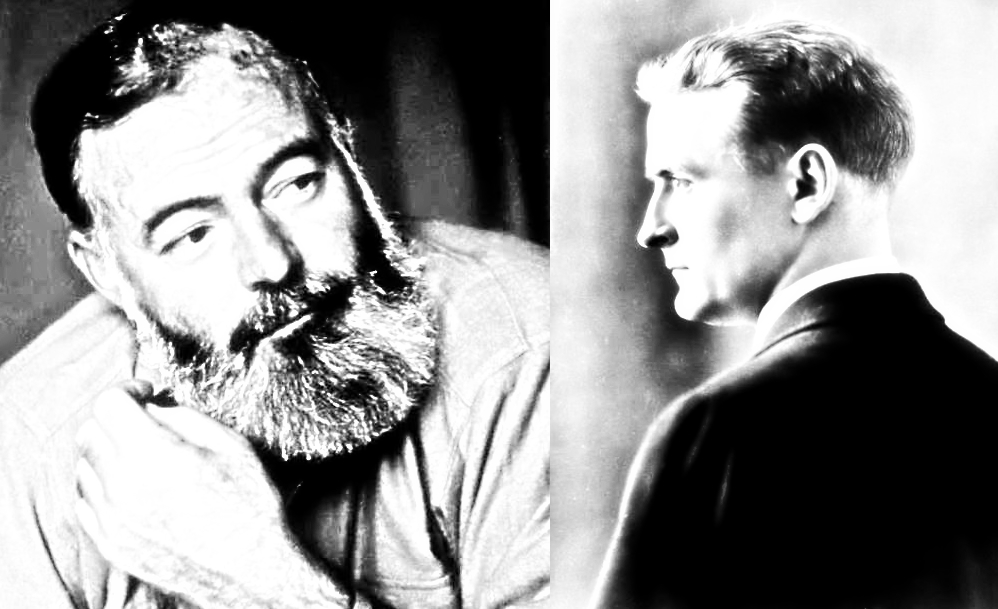I can vividly recall my first encounter with The Mysteries of Harris Burdick in my 5th-grade classroom. I was seated near the front, and my teacher presented each page of the book on a slideshow (probably a projector, given it was the 90s). My curiosity was piqued; it was all so strange.
Each image depicted something fantastical: a house shooting into the sky, children on a railroad trolley bound for a distant, otherworldly land.
In one image, a child slept over a book, now overrun with vines. The caption read: He had warned her about the book. Now it was too late.
The only other time I recall being equally perplexed (and when my love for folklore truly began) was when I learned about Roanoke Island in the same 5th-grade class, encountering the word “Croatan” for the first time (4th and 5th grade had a profound impact on me as a reader and writer.)
However, The Mysteries of Harris Burdick ignited the narrative writer in me at the time. Our assignment, as given by the teacher, was to choose an image and craft a story around it. Naturally, I was drawn to an image of an older man with glasses, hoisting a chair high above his head, with a lump beneath his carpet evidently menacing him in some dreadful manner.
Underneath the picture, the caption read: Two weeks passed and it happened again.
Today on the blog, we delve into the 1984 picture book The Mysteries of Harris Burdick, exploring the author, its fictional background, and its textual and visual significance.
The Author
Published in the mid-80s, The Mysteries of Harris Burdick was created by Chris Van Allsburg, a celebrated writer and illustrator. He was born on June 18, 1949, in Grand Rapids, Michigan. Allsburg attended the University of Michigan and the Rhode Island School of Design.
His inaugural work, The Garden of Abdul Gasazi, debuted in 1979. He penned numerous more tales for children, including Bad Day at the Riverbend in 1995 and Probuditi! in 2006. Three of his books—Jumanji, The Polar Express, and Zathura—were adapted into popular films (All American).
Fictional Background?
Returning to The Mysteries of Harris Burdick, Allsburg conceived the fictional character Harris Burdick, who vanished after creating and illustrating the book. While seemingly an intentional (and enigmatic) creation, much like William Goldsmith’s meta-narrative introduction in The Princess Bride and Stephen King’s pseudonym Richard Bachman, the character truly comes alive in the book’s introduction, also penned by Allsburg.
In the 1995 introduction, Allsburg recounts that a man named Peter Wenders, a children’s book publisher, arranged to meet Harris Burdick to discuss the illustrated book that would become The Mysteries of Harris Burdick. According to the introduction’s lore, Burdick brought only the images, which captivated Wenders. The publisher agreed to read Burdick’s companion stories the next day.
Wenders would never see him again.
“Harris Burdick was never heard from again,” writes Allsburg. “Over the years, Wenders tried to find out who Burdick was and what had happened to him, but he discovered nothing. To this day, Harris Burdick remains a complete mystery.”
Later, as per the introduction, another drawing (likely by Burdick) was discovered by a literary antiquarian behind the glass of a mirror that had cracked in his shop. The picture was “unsigned” and bore “a title and caption written in the margin at the bottom”—the unmistakable signature of Harris Burdick. However, his whereabouts remain unknown, at least according to lore (Allsburg).
Why it’s Important
Subconsciously, this book frequently crosses my mind, along with the story I penned in 5th grade featuring a man assaulting the carpet with a chair. In fact, I fancied myself the next great horror writer in America (even in 5th grade), but I ended up crafting a tale so horrifyingly dumb that it elicited uproarious laughter from my class—and even the teacher couldn’t contain herself. Nevertheless, everyone seemed to appreciate my venture into horrific narrative, all thanks to the inspiration drawn from The Mysteries of Harris Burdick.
Yet, beyond my embarrassing foray into writing, I imagine it was much the same for many other writers. They encountered the book, whether through assignment, discovery, or presentation, and found themselves captivated by what lay between its covers. It’s a beautifully manufactured book, teeming with inspiration for writers within. The images are profoundly captivating, each a masterstroke of visual stimulation.
Conclusion
Allsburg attests that he has “received hundreds of Burdick stories written by children and adults” over the years, a tribute to how vital Burdick’s work has been as a wellspring of motivation for writers.
Lemony Snicket, the fictional author of A Series of Unfortunate Events, asserts in the foreword to The Chronicles of Harris Burdick: Fourteen Amazing Authors Tell the Tales, that Harris Burdick’s true disappearance wasn’t one for the late-night crime shows, but one that empowered writers; it was a magic trick that held significance for every writer who ever grappled for inspiration.
Snicket suggests: “Mr. Burdick might have dispensed his stories, over many years, to his comrades in literature. Perhaps he bestowed them as gifts in appreciation of their hospitality. Perhaps he concealed them in their guest rooms, hoping they would never be found. In any case, it was always my hope that the rest of Mr. Burdick’s work would surface, even if the mysteries of Mr. Burdick—who by now is either very old, quite dead, or both—remained unsolved.”
If you haven’t yet delved into The Mysteries of Harris Burdick, I wholeheartedly recommend it. Likewise, please share which image you find most intriguing as a source of inspiration in the comments!
Works Cited
Allsburg, Chris V. The Mysteries of Harris Burdick. HarperCollins Publishers. 1996.
Allsburg, Chris V. The Chronicles of Harris Burdick: Fourteen Amazing Authors Tell the Tales. HarperCollins Publisher, 2011.
“Chris Van Allsburg.” All American Speakers. Web. https://www.allamericanspeakers.com/speakers/429875/Chris-Van-Allsburg







